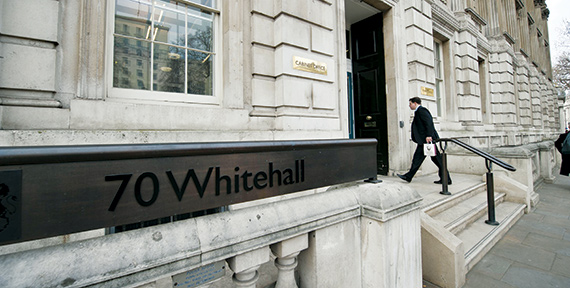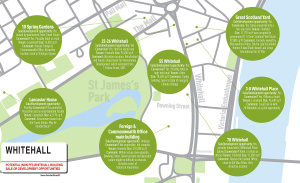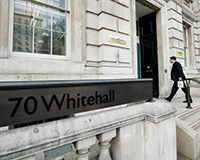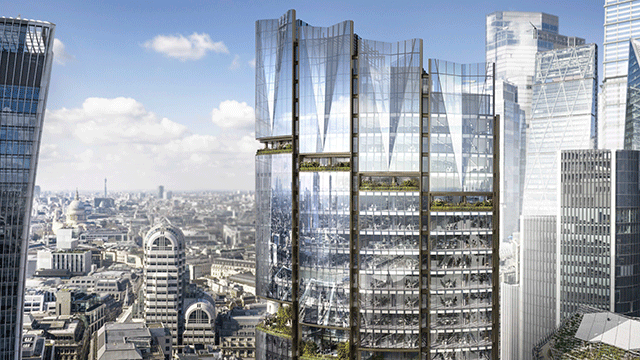
With the government committed to reducing its central London estate, a number of world-famous buildings could be up for redevelopment
Lisa Pilkington looks at what’s on offer
Whitehall, home to the beating heart of UK government and globally famous buildings such as 10 Downing Street and the Old War Office. With the government drastically cutting its central London office estate from 213 buildings to 23, a number of high-profile properties have already been sold. So, could 10 Downing Street (or any other iconic buildings) be transformed into luxury retirement flats, an upmarket boutique hotel or high-end retail?
It’s not as crazy as it sounds. Although Downing Street is highly unlikely to be redeveloped, being the official residence of the prime minister and within the government’s “secure zone,” it is a different story for Winston Churchill’s Old War Office which was sold last December for £300m and is being transformed into a hotel and residential block by the Hinduja Group, in partnership with Spanish group Obrascon Huarte Lain Desarrollos. Meanwhile, the revamped 100-year old Admiralty Arch building is due to re-open next year as a 100-bedroom five-star hotel and 11,840 sq ft private members club, after Spanish hotelier Rafael Serrano acquired it for £60m in 2012 via his Prime Investors Capital firm.
These two deals alone have netted the government around £360m, so the appeal of selling off other (non PFI) Whitehall properties to drive down costs, and put cash back in the coffers, is obvious. According to the Government Property Unit’s (GPU) latest State of the Estate report, between 2010 and 2015 the government raised £1.4bn in capital receipts by vacating an average of one building per day, helping to reduce the size of its estate by the equivalent of 27 Buckingham Palaces and saving £625m.
With plans to cut the government’s central London office estate by 80% by 2020 well under way, further sale and redevelopment opportunities could be within touching distance.
James Leaver, head of public sector consultancy at Knight Frank, thinks the most obvious buildings to next hit the market could be the Department of Energy and Climate Change building
at 55 Whitehall which links with 3-8 Whitehall Place SW1 (see above).
“Fifty Five Whitehall is right opposite the Old War Office and outside the secure zone. It’s a great location for an office or hotel. It appears that nothing is off limits for this government. If it’s been bold enough to sell the Old War Office and Admiralty Arch it could very comfortably extract value here,” he says.
Meanwhile, Deloitte partner Victoria Smith also believes 55 Whitehall to be a lead candidate for sale or redevelopment. “This is not a PFI building and there should be an opportunity to dispose of it in due course. It’s a trophy building in Whitehall and is likely to go for hotel or high-end retail redevelopment.”

Johnny Dunford, senior director at BNP Paribas Real Estate adds: “Northumberland Avenue (in Whitehall) started life as a smart hotel, was then taken over by the Ministry of Defence for many years and more recently has been through a massive refurb and is now back to being used as a hotel again.”
But, asks Leaver, “Would it be the right thing to sell, or to hold government properties?” Leaver argues that while the capital receipts are attractive, he believes the government “should be focussed on getting out of leaseholds and investing in its freeholds.” He says: “It should behave like a property company and create possibilities to create income-producing assets. Should it sell the family silver or invest in its estate so it can expand and contract in the future?”
There’s no doubt that any sale would pique investors’ interest, primarily from Middle Eastern sovereign wealth funds and Far Eastern institutional investors.
So far, no major freeholds have been sold, apart from the Old War Office and Admiralty Arch. Deloitte’s Smith says: “The policy so far has been to come out of leaseholds wherever possible. The government wants to retain the PFI properties and flagship buildings – Downing Street etc. In the short to medium term it has to stay and use the buildings as intensively as it can. The former Treasury Building for example now has 10 government departments in it.“
Perhaps a public/private joint venture could be the answer? Smith believes it could, if the property and opportunity was right. But adds: “This is probably more likely to happen outside of London. I’m not sure the government would get a lot of additional value from a joint venture structure in central London, as opposed to a straight sale.”
Meanwhile, although the residential conversion market has proved a mighty cash cow in recent years, many properties are likely to go for hotel or retail development, rather than residential due to Westminster city council’s new rules, adopted last month, to counter such development, and protect its declining office stock.
The new measures include no offices being lost unless a developer can demonstrate that the benefits of the scheme outweigh the loss. Leaver says: “The party’s over. This new rule almost certainly rules out residential as a value-driving option for the government.”
Another new rule, set out by the chancellor in the March Budget to charge government departments market rents for space in publicly owned freehold buildings, will accelerate the government’s move out of expensive central locations, according to Bruce Mann, the head of the GPU.
The initiative comes into force in 2017 and, according to Mann, would be cost-neutral in the first year, with departments presently occupying freehold space allocated additional funds to meet the cost of rent in their first year. The policy encourages departments to decentralise from all but the most essential space in high-value locations, to various new public sector hubs in fringe locations such as Croydon, Stratford, St Albans and Old Oak Common.
Deloitte’s Smith explains: “The plan is that people won’t go to these hubs on a full-time basis. It’s more likely to be for one or two days per week.”
Departments like the Ministry of Justice are already encouraging people to work in outside buildings such as courts, says Smith. “At the moment this is done on an informal basis but is likely to become a more accepted working arrangement and be more formalised.”
Market observers say that the strategy is being developed and likely to be trialled from spring next year.
Vacant space
There was a total of 2.2m sq ft vacant space across the government’s entire mandated civil estate at 31 March 2014. Overall, this represented a 2.4% vacancy rate, well below the reported national average (public and private sector) of 8.8%. Overall vacant space reduced by 202,745 sq ft (8.5%) from the previous year.
Source: State of the Estate report 2013/2014
Government occupancy in numbers
• 40,000 estimated,full-time government employees based in and around Whitehall
• 20,000 could end up working in hubs around London – including Croydon,
St Albans, Old Oak Common and Stratford
• 121.6 sq ft Average floorspace per person across the government’s office estate in 2013/14
• 135.6 sq ft The equivalent private sector comparator 2013/14
• 142 sq ft Average floorspace per person across the government’s office estate in 2012
• 107.6 sq ft Target average floorspace per person due to be hit by the end of 2015
• 86.1 sq ft New average floorspace per person target when the new standard starts on 1 January 2016. It expects to achieve this figure by 31 March 2018
• £370bn estimated value of the government’s public sector estate. Whitehall estate value
unknown
• £2.9bn Total cost of running the government’s mandated civil estate in 2013/14
• 5% decrease in size of the government’s entire mandated estate from 2012/13 to 2013/14 to 92.35m sq ft
Source: EG and the State of the Estate report 2013/2014
lisa.pilkington@estatesgazette.com











